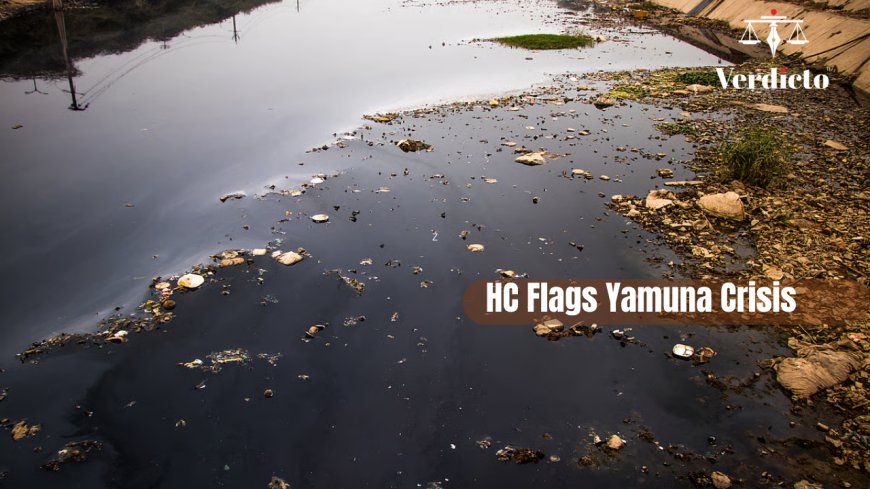Delhi High Court on Yamuna Pollution: DPCC Directed to Submit Industrial Waste Chart | Environmental Law Case Study
Delhi HC directs DPCC to file chart of industrial areas and monitoring of waste treatment, cites disturbing reports on STPs/CETPs. Key case on Yamuna pollution for law & UPSC aspirants.

The Delhi High Court has once again raised serious concerns over the state of sewage and industrial waste management in the capital, directing the Delhi Pollution Control Committee (DPCC) to file a complete chart of all industrial areas and detail the steps being taken to monitor effluent treatment.
The matter comes under a suo motu PIL (Public Interest Litigation) initiated after the Court took note of a news report on waterlogging in June 2022. Since then, the case has expanded into a wider inquiry into drainage, sewage, and Yamuna river pollution.
Key Findings of the Court-Appointed Committee
Reports placed before a Division Bench of Justice Prathiba Singh and Justice Manmeet Pritam Singh Arora reveal:
-
Mixing of domestic sewage with industrial waste, leading to contamination.
-
Industrial units directly dumping untreated effluents into drains.
-
Treated water from STPs/CETPs mixing with untreated sewage before reaching the Yamuna, nullifying treatment efforts.
-
Underutilisation and corrosion in CETPs needing urgent upgradation.
-
Lack of real-time monitoring of flow meters in several plants.
The Court remarked that these findings are in stark contrast with the Delhi government’s “satisfactory” action-taken report.
Why This Matters – The Legal Angle
This case highlights important legal principles:
-
Right to Clean Environment – Recognised as part of Article 21 (Right to Life). Courts consistently link pollution-free air and water with fundamental rights.
-
Polluter Pays Principle – Industries discharging untreated waste can be held liable under environmental law.
-
Judicial Oversight – When executive agencies fail, courts often step in through PILs to ensure compliance with constitutional and statutory duties.
For aspirants, this case is a live example of judicial activism in environmental governance.
Directions Issued by the Court
-
DPCC: To provide details of all industrial areas, compliance with treatment norms, and the number of industries connected to CETPs.
-
DSIDC: To file a status report on 13 CETPs, and specifically chart industries in Bawana and Narela.
-
DJB: To continue meetings under its comprehensive STP action plan and place results before the Court.
-
GNCTD Chief Secretary: To revisit the 2018 IIT Delhi Drainage Master Plan, which was never implemented, and update it if necessary.
-
Government Consultants: Their pending drainage reports must be produced in Court; no tenders can be awarded without Court’s permission.
The Bigger Picture
This is not just about sewage treatment. It is about:
-
Governance failures: agencies working in silos, passing blame.
-
Judicial intervention: stepping in to enforce environmental laws.
-
Urban planning: balancing storm water and sewage networks.
-
Yamuna rejuvenation: still stuck at the planning stage despite multiple committees and master plans.
What’s Next?
The matter will be heard again on September 19, 2025, when the DPCC, DSIDC, and other agencies will have to file compliance charts and updated reports.
Case Title: Court on its Own Motion v. Govt. of NCT of Delhi & Ors.
W.P.(C) 7594/2018 & W.P.(C) 9617/2022
📌 Follow us on YouTube, Instagram, and Twitter for more updates.







